Choosing the right crossbow can be a challenge, especially if you are a newbie to the sport of archery. Archery is an exciting sport that uses a bow to propel arrows. So needless to say, you need a good bow to excel in hunting if this is what you are interested in. Or just competitive archery where you would shoot at a target for accuracy from a set distance or distances.
It is important to consider a number of criteria before you choose to purchase a crossbow because something which is working for others might not work for you. A careful analysis of different factors is required. This article takes you through everything you need to know about crossbows and how you can get your hands on the one perfect for you.
Table of Contents
What is a Crossbow?
Traditionally, a crossbow is a kind of weapon based on the bow. It has a horizontal assembly like a bow mounted on a stock. It shoots bolts or quarrels. And it was greatly used in medieval times as a weapon. While the bow and arrow require a lot of physical strength, vigorous training, and expertise, the crossbow is a weapon that is cheaper and simple that can be used by anyone. Plus they are badass. Today, crossbows are widely used in hunting and shooting sports.
In modern times, crossbows are used for sports and bowhunting in modern archery. They are also used in military and paramilitary applications. Unlike before, crossbows are not used for assassinations or self-defense (as in The Walking Dead) but, for other uses.
Advantages of Crossbows over Traditional (Long) Bows
Using a crossbow, it is possible for archers to release a draw force much greater than they could achieve using a bow. Crossbows can hold the tension for a long time which is an added advantage. While the bows require better skill to shoot accurately, the crossbow can be used with ease with a little training. It is a more accurate weapon but, it is heavier than a bow and has a slower rate of shooting. It also has a smaller draw length when compared to the bow, meaning the crossbow must have a higher draw weight for the same energy to be imparted to the arrow.
Basic Crossbow Terminology
- Arbalist: Term for the crossbow in the Latin language.
- Arrow: An arrow is meant to be shot from a bow and is a projectile with a straight thin shaft having a pointed head at one end and flight-stabilizing vanes at the other.
- Bastard String: Synonymous to the bracing string, bastard string braces a crossbow for installing bowstring.
- Bolt: Heavy projectile for a crossbow that is short and resembles an arrow.
- Bowstring: String used on archery weapons that transfer energy from bow to projectile.
- Brace Height: Distance between the belly side of the riser and braced bowstring, measured from the center of the bowstring.
- Butt: Rearmost part of crossbow stock.
- Center Shot: Crossbow or bow lath designed for the bolt to pass through its center; center shot crossbows have two separate limbs.
- Cock: Cock is something that helps draw bowstring from braced position to latched position.
- Cocking Lugs: Metal protuberances on a crossbow that anchors bending lever, goat’s foot, or cranequin.
- Cocking Peg: Peg needed to set some crossbow trigger mechanisms before cocking.
Click To See More
- Cocking Ring: Ring made of metal which is bound to the front of the lath to anchor bending lever.
- Cockscombing: Method of serving used on loops of crossbow bowstrings.
- Composite: Combination of materials used in the making of lath including wood, horn, baleen, and sinew.
- Compound: Modern lath construction using eccentric pulleys and cables.
- Cord and Pulley: Cocking aid containing cords with ends that are attached to the user’s belt running.
- Dry Fire: The act of releasing a cocked bowstring without the projectile.
- End Loop: Loops at both ends of the bowstring.
- EndCap / Flatnock: Protective cap that protects the rear of bolt like an arrow nock but, not forked.
- Goat’s Foot: Two-piece hinged cocking lever made to pull bowstring from behind the latch.
- Handbow: Term used to distinguish hand-held bow from the crossbow.
- Latch: Mechanism to hold crossbow bowstring in the cocked position and to release bowstring when the trigger is pulled.
- Lath: Bow portion of a crossbow that stores energy to propel the projectile.
- Limb: Portion of lath to left or right of center.
- Nock: A protective cap on the rear of the bolt is forked; it is necessary with trackless crossbows to keep the bolt in contact with the string. Notches at the ends of the lath or bow to accept string are also called nocks.
- Nose: Foreword end of a crossbow; also used to refer to the assembly attaching lath to stock.
- Nut: Cylindrical latch made of antler or ivory.
- Power Stroke: Distance between cocked and braced string positions as measured along the track.
- Prod: Bow part of the crossbow.
- Quarrel: Bolt having a four-sided (square) head.
- Quiver: Container to carry bolts or arrows.
- Riser: Non-bending center section of lath or bow which is thick.
- Safety: Mechanical device in the form of a lever or button which is used to stop crossbow from shooting unintentionally.
- Serving: Wrapping of thread that protects the loops and center of bowstrings.
- Set Trigger: Trigger that is set to release under very light pressure.
- Sled: Guide attached to crossbow bowstring’s center to reduce string wear and ensure exact centering of the string when cocking.
- Spanner: Term for a device used to cock crossbows.
- Spanning: The physical act of cocking crossbows.
- String Loop: Loop that is bound to the center of some crossbow bowstrings to engage the latch.
- Stirrup: A ‘D’ or ‘T’ shaped device used to hold the crossbow with feet while cocking.
- Stock: Part of the crossbow to which every other component is attached and by which it is held.
- Track: Grooved part of the crossbow between the latch and lath where the bolt rides.
- Trackless: Crossbow that has a bolt rest in front instead of a full-length groove.
The Diagrams of Crossbow Parts
1. Compound Crossbow Parts
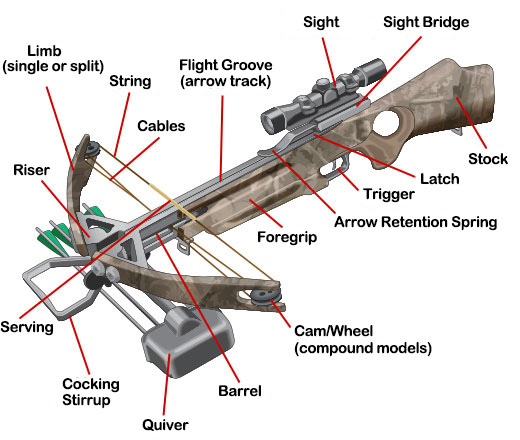
2. Recurve Crossbow Parts
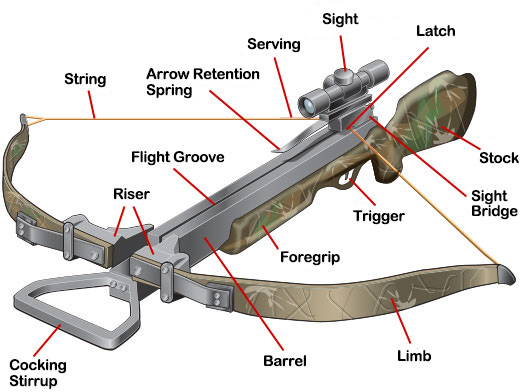
I’m A Beginner: Which Crossbow Should I Buy?
There is a wide range of crossbows available in the market today. This makes it pretty difficult for the novices and beginners to choose a crossbow that is a perfect fit for them.
To help you out, here are a few factors that you should consider while buying a crossbow:
1. Determining What Will You Hunt
The first thing to consider while picking a crossbow is to decide which animal you are targeting. It is seen that most of the crossbow models available have the capacity to hunt any animal. It is common knowledge that while hunting, shot placement is more important than the power of the bow. But, it would be best if you select a crossbow that has speed and power and in turn better performance.
2. Your Height
Remember to buy a crossbow model that fits your height. Find out which model is the easiest to cock using a rope cocking aid. Most of the crossbow models come with a crank. But, it is usually noisy, slow, and heavy which would require you to apply good physical strength. So, it is better to use a rope cocking aid instead. Cocking a crossbow with a rope cocking aid depends on your height and not on your strength.
3. Choosing Between Recurve and Compound Crossbow
To choose between a recurve and a compound crossbow, you must first understand their pros and cons. A recurve crossbow is simple and reliable. It has a simple bow and string with no pulleys or cables to adjust. But, it is wider from axle to axle (ATA) which is the measurement across the widest portion of the bow section. It also has a higher draw weight and offers less overall speed, unlike the compound crossbow.
A compound crossbow has cables or pulleys and has a narrower ATA. This makes it easier to shoot from a confined area and also makes it more portable. The pulleys and cables offer extra moving parts and potential points of failure.
4. Speed of the Crossbow
It is generally said that too much speed is not required for a crossbow for simple targets like deer. In fact, high speed can sometimes negatively affect the shooting. The increased speed of an arrow is good for shooting flatter and hitting harder.
But, the con is that high speed reduces the tolerance of the crossbow to any little mistake. If the draw is not perfect, a fast arrow reacts more and does not forgive the imperfections of the arrow. A lot also depends on the weight of the arrow. If the arrow is heavier, it slows your speed but, it provides more force to the target. Go for an arrow that has the correct speed for your job.
5. Safety
If you are a beginner, you should know the safety concerns of a crossbow beforehand. With modern safety devices, you can be sure that you and your crossbow remain safe. Two of the safety features are the anti-dry fire and forward grip design.
Click To See More
6. Grip design
The part of the crossbow below the rail where you have your stabilizing hand is called the forward grip. The arrow is usually contained within the rail while the bowstring is not. So, the bowstring slides down the rail during firing. If a finger gets in the way of the string, you may get it injured. To avoid this, pick a crossbow having a forward grip design with wings that run the length of the grip and stick out to the side.
7. Dry fire
A dry fire happens when a crossbow is fired without an arrow. This is bad for the crossbow as it puts stress on the limbs of the crossbow. The arrow enables the limbs to release energy in a controlled manner. So, the absence of an arrow results in a lot of energy being released rapidly. Most of the crossbow models come with a mechanism that prevents the string from getting released when an arrow is not present. This is called an anti-dry fire device. Ensure that this functionality is present in your new crossbow that you are about to purchase.
8. Noise
A crossbow is very powerful in that it produces noise/vibration when fired. When in the cocked position, a crossbow stores a lot of energy. When the limbs shoot forward, this stored energy creates noise. Though crossbows can never be silenced, manufacturers take care to reduce the noise. To eliminate the string vibration, you can add a string dampening system to the crossbow. They attach to the limbs or the riser of the crossbow and help lessen the noise. Other silencing products you can opt for include cat whiskers, string suppressors, and limb dampeners.
9. Accessories
Like any other product in the market, crossbows come with a range of accessories like quivers and arrows to name a few. But before you shop for these, see which ones are absolutely necessary for you. Some could be expensive and can be avoided if you feel so.
10. Draw weight
Crossbows having draw-weight in the range of 75 to 125 pounds is enough for hunting though most of the hunting crossbows come in the 150 to 175 pounds range. It is found that bigger is faster. So, choose the draw weight according to your requirement.
11. Bow weight
A lightweight crossbow will be easier to carry around while you go hunting. But the disadvantage is that due to the less weight, the crossbow may not remain steady while shooting. Lightweight models are still preferred if you have to walk long distances. You can go for a heavier one if you plan to stay in one place as it will offer more stability.
12. Cost
As a beginner, you can start with a crossbow that comes at a lower price. And when you become comfortable, you can upgrade and buy a costlier model of higher quality. This is advantageous because high-quality crossbows are found to last long even after regular use.
13. Scope sight
It is better to go for a crossbow that uses scope sight though some varieties come with open sights. To make accurate shooting possible, these optical sighting devices are much helpful. For magnification, you can choose power between 0 and 5X. There are many varieties of optics available like tubular magnified and red dot sights. A crossbow package usually has a 4X scope.
14. Law on Crossbows
Every country has a list of laws concerning crossbows. These differ widely from one country to another. Each jurisdiction defines crossbows differently. The minimum age for possession of crossbows is common in many places and there are restrictions on the sales of crossbows too. So, check for the rules pertaining to your country before buying a crossbow.
15. Assembly
When you purchase a crossbow, you get it in a big box and you have to assemble it yourselves. The bow section is usually fully assembled and a compound bow will be fully strung. The assembly includes mating the bow section to the stock/barrel assembly, mounting the scope, and adding the necessary accessories. The tools needed for this are included in the box and the instructions are easy to follow.
16. Arrow selection
It is required for your arrow to be fast enough to hit the target accurately. Forget cheap arrows and buy the best arrows you can afford and which are specially designed for crossbow shooting. Ensure that they are cut to the proper length, have a nock designed for crossbows, and have the proper fletches. The high-tech and rugged arrows are usually made from carbon.
17. Manufacturer
When buying a crossbow, remember to choose one from a well-known manufacturer like Barnett Crossbows. This way, you can be sure of its high quality and even get a warranty for the product. Good manufacturers bring about a lot of innovative ideas in the crossbow which makes using it easier. You can also buy one in a package that comes with essential accessories.
That said, by now you must have a thorough understanding of the qualities that an ideal crossbow must-have. Let’s delve deeper into the subject and talk about some of the best crossbows that are available with us today.
Highly Recommend these Crossbows to Beginners
1. CenterPoint Sniper 370 Crossbow
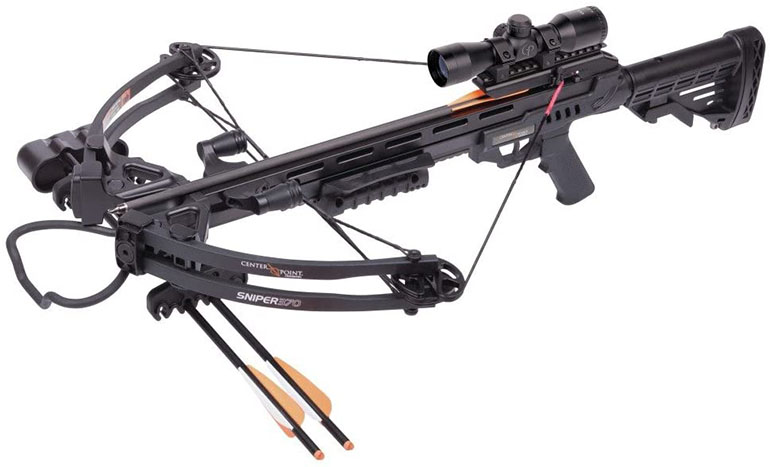
CenterPoint Sniper 370 is a great pick for anyone beginning to use a crossbow. It is a high-performance compound crossbow with a comparatively low price. It has a tactical AR-style fully adjustable cock and a durable and long-lasting CNC machined aluminum rail having a shoot-through aluminum riser. The crossbow is manufactured keeping in mind the safety of the user. The quad limbs have a precision CNC Machined Cam System which is installed with the auto-safety trigger mechanism and anti-dry fire.
It is also equipped with a Picatinny rail and adjustable foregrip. The fore-grip ensures amazing accuracy while the quad limbs promise speeds up to 370 FPS. The crossbow offers a power stroke of 13.50 and draw-weight of 185 lbs. The pack includes three 20 inch carbon bolts, 4x32mm scope, rope cocker, quiver, and shoulder sling. You can choose this one even if this is your first crossbow purchase.
Check Price and Rating on Amazon
- The cock is fully adjustable and long lasting.
- It has integrated string suppressors to eliminate noise.
- The illuminated scope is included.
- It is a little front-heavy.
- Tactical stock may be easily damaged.
2. SA Sports Fever Crossbow 543
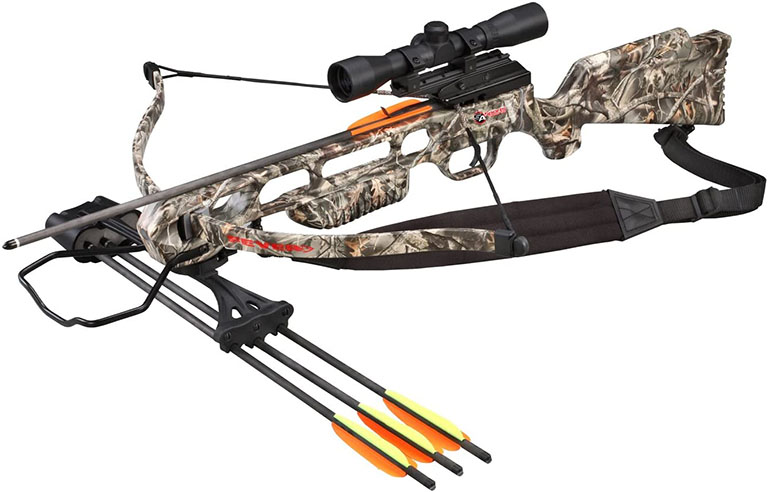
SA Sports Fever Crossbow is very reasonable that could be bought by every hunter, be it a beginner or an expert. You can easily carry it along as a companion for your adventures. The features and accessories are all of high quality. It is a lightweight crossbow having a weight of fewer than 5 pounds and a short power stroke. And it is equipped with an ambidextrous safety mechanism and has a large boot-style foot stirrup. It has a lightweight composite track and adjustable weaver-style scope mount.
The draw weight is 175 pounds and the arrow can be fired at a speed of 240 FPS. Cocking the crossbow is easy as the rope cocking device is provided. As is expected of a recurve crossbow, this one pulls back smoothly. The safety mechanisms are put in place automatically and can be relied on. You can use the crossbow even in cold conditions when daylight is still available.
The accessories that come with the package includes replacement fever string, Dragon Eyez 7x26mm 1500yd, limb tip pair, Empire side-mount quiver bracket w/ claw mount, Empire quick detach quiver w/universal mount, 3 red dot multi-range, 175 lbs replacement limb, 4×32 Illuminated multi reticle scope, 20″ Carbon Bolts 6pk, and Fever recurve crossbow. The pack can be easily assembled starting with the installation of limb protectors and then the foot stirrup. Once you have assembled everything including the accessories, you can test for accuracy.
Check Price and Rating on Amazon
- It comes with a lot of accessories to help you get started.
- The starter package is not expensive.
- It is not very accurate.
- During assembly, it requires stringing.
3. Barnett Recruit Crossbow
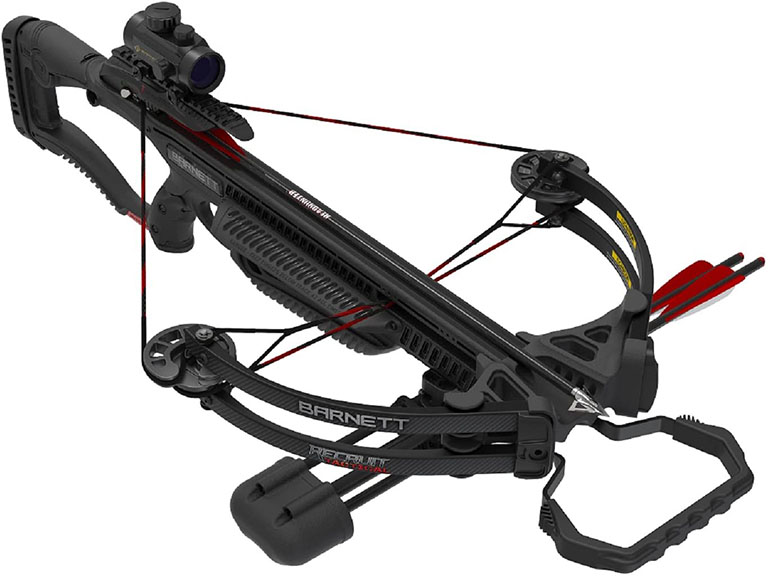
This is the perfect crossbow for hunters who are small-framed. It has a draw weight of 130 lbs and 80-foot pounds of energy. It gives enough speed and is easy to handle even for beginners. This is the best companion for any hunter as it is compact and can be taken anywhere. It has an adjustable buttstock so that you can use it as you grow by making adjustments. The pack comes with three 20″ arrows, a quiver, rope cocking device, and Premium Red Dot Sight. You can add a crank cocking device and it works perfectly.
Operating Tips:
Before firing, check the crossbow and arrows thoroughly. Damaged nocks and arrows are dangerous to use and should be repaired or thrown away. Never try to shoot without an arrow. Doing so will damage the cables, string, limbs, and may even cause injury to the user.
Another issue is that wrong usage voids the warranty. Remember to use appropriate crossbow arrows like Barnett 20″ carbon arrows with half-moon nocks. Damage can be caused to the limbs, cables, string, and the person if arrows of improper mass weight or stiffness are used. Also, apply lube wax to the cables, string, and flight track before cocking the crossbow.
Check Price and Rating on Amazon
- The crossbow can be used by hunters of any size.
- It is fast, accurate, and compact.
- The string snaps if not used carefully.
Shooting Your Crossbow
Here is a step by step procedure on how should you shoot your crossbow:
How to aim
Most of the models of crossbow have the scope or have a rail to mount a scope. Looking through the scope, you can see a vertical line intersecting a horizontal line in the scope’s center. These are known as crosshairs.
Generally, you place the crosshairs where you expect the arrow to hit and squeeze the trigger. For this to work, the scope should be sighted in and the distance for the sighting in is the distance you shoot. Some scopes have extra horizontal lines below the main crosshairs. These are used to shoot targets that are at longer distances. In this case, each horizontal line creates a new crosshair where it intersects the vertical line.
How to draw
Drawing a crossbow requires a force greater than what is required for a standard vertical bow. Usually, the crossbows have draw weights in the range of 150 to 180 pounds. It is important to draw the bowstring uniformly every time so that your shots come out uniform. This can be achieved using a rope cocking device. This device is made to hook to the bowstring on both sides of the loops and rail across the back of the crossbow.
Place the crossbow pointed at the ground and your foot in the foot stirrup. Place the hooks on the rope cocking aid on each side of the rail and hold the handles at the end of both sides of the rope cocker. Now, pull straight up on the handles with both hands until the string engages in the firing mechanism. A quick pull straight up along the rail makes cocking easier. You can remove the rope cocking device after ensuring safety.
How to fire
After the crossbow is cocked, place the arrow on the rail. This is done by holding the arrow near the point and sliding it down into place on the rail and all the way back so that it comes into contact with the bowstring. While doing this, ensure that one of the vanes is pointed down in the rail’s slot in such a way that the arrow rests not on the vanes but, on the rail. Also, make sure that the groove in the arrow’s nock is horizontal such that the bowstring seats into the groove. Remember to load the arrow with the odd color vane that is pointed down and seat back the arrow fully against the string. When you fire, there will be a slapping sound from the string though very little recoil will be felt.
How to sight in
After you understand how to look through the scope and how everything works, the next step is to sight in the crossbow. For this, unscrew the caps on the right side and top of the scope. This shows the dial and you can adjust the scope to zero it in. First, fire the crossbow into a target that is 20 yards away to see if your scope is close enough to hit a target at 30 yards. If not, use the dials to adjust the aim point. The right side of the dial has the letter ‘L’ and an arrow. If you click the dial in the direction of the arrow, you can move your aim point to the left. By clicking in the opposite direction, you can move it to the right.
So, if the arrow is to the right of the bull’s eye, move the dial in the arrow’s direction to move the aim point to the left. You can use the same method with the top dial which has a ‘UP’ and an arrow. Once you understand how the dials move the aim point, you can zero your scope easily.
Crossbow Accessories and Aids You Should Make Use of
Crossbow cases
When you buy a crossbow, you also need a case to carry it in and store it when not in use. There are many varieties available from which you can choose the best one suited to you. If you travel often, it is wise to go for a hard-shell case that offers good protection. The other option available is a soft-shell case which has minimal padding and its level of protection is lesser than the other one. You may also be careful to choose a durable fabric for the case. Other things to consider while buying a crossbow case are tear resistance, sizing, and weather resistance.
Quivers
A quiver is an accessory that holds the arrows or the bolts. Quivers have a varying size just like the arrows. As the crossbow is heavy, it is preferred to have a quiver that is lighter and easy to access. Buying a quiver bracket lets you attach and detach the quiver easily. These days, side quivers are also available for hunters who do not like mounted quivers.
Arrows
The arrow used in a crossbow is called a bolt or quarrel. Bolts have square heads and vary in length. Typically, bolts are shorter than traditional arrows. Every crossbow requires arrows of a particular length which are specified by the manufacturer. So, keep this in mind while buying arrows.
Cocking devices
Cocking is the act of preparing the crossbow to fire. As the crossbow draw weights are heavier these days, there is an increasing need for cocking aids that make cocking easier. Even though you can cock the crossbow manually, there are cocking devices that assist you in this. These either come with the crossbow or you have to buy them separately. The common cocking devices are the hard crank and the cocking harness.
Noise dampening devices
When fired, a crossbow produces noise or vibration due to its power. This is not very desirable when you go hunting because this could scare away your target animal. To reduce this noise, you can buy noise-dampening devices that eliminate string vibration. Some of the noise dampening devices include limb dampeners, barrel dampeners, foot stirrup dampeners, etc.
Rangefinder
When an arrow is shot from a crossbow, many factors affect the velocity and path of the arrow including the wind, barometric pressure, and temperature to name a few. When the distance between the hunter and the target increases, more factors come into play. A rangefinder is a valuable tool that helps determine the distance at which the target is present in comparison to the hunter. Knowing the exact distance enables the hunter to make vertical adjustments and thereby increase the chance of success.
FAQs Related To Crossbows
Are there any left and right-handed crossbows?
No, there is no left or right in crossbows. Unlike a rifle, crossbows do not eject any type of spent casing. So, it is possible to shoot either way. But, you may have to move the mountings for a quiver if it is attached to the side of the crossbow.
Can the crossbow string be changed?
The crossbow string can definitely be changed but, with proper tools. You can easily do this using a bow press. A bow press lets you remove the tension from the limbs so that the changing of the string becomes easy. It is possible that this requires an archery pro shop. But most times, a portable bow press does the work.
Are crossbows legal to hunt from anywhere?
Almost every country has rules regarding the use of crossbows. It is often seen that even the states have their own rules. They have framed laws permitting the use of crossbows for hunting by hunters including those with a disability. It is better to understand the laws concerning crossbows in your area by checking with the state regulations. Abiding by these laws is necessary for your own safety.
Are there special crossbows for women?
There are no special crossbows for women. However, most crossbows for women stick to certain criteria. Crossbows meant for women are light in weight and come with customized accessories.
Wrapping Up
This brings us to the end of this article. We hope that the above article would have helped you in understanding the various nuances related to crossbows.
What are your views on this? Did we miss anything important? Or, do you have a query related to crossbows? Do let us know in the comments.

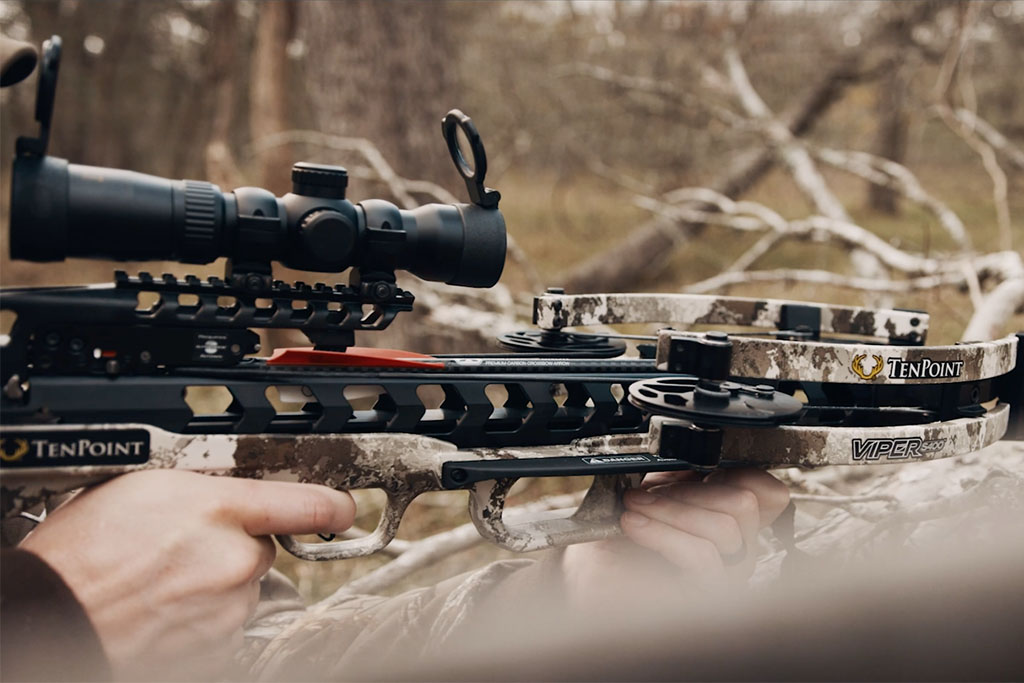
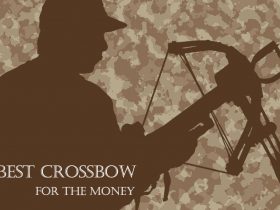
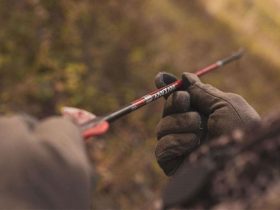
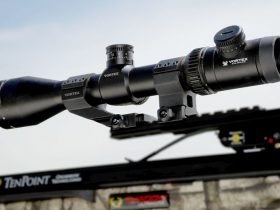
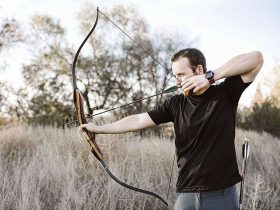
Leave a Reply